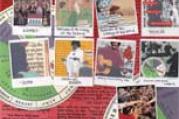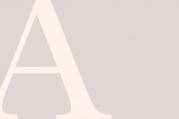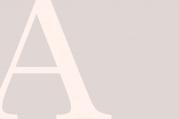Click here if you don’t see subscription options





False Problems?
Frederick W. Gluck’s article, Crisis Management in the Church (12/1), is flawed by several statements that are not supported by the available data.
The church’s traditional sources of revenues are drying up. Some weeks ago I finished writing a report that analyzed contributions to Sunday collections and diocesan annual appeals in the years 2001 and 2002. I found that Catholic household giving in the Sunday collections increased from $5.573 billion in 2001 to $5.846 billion for 2002, an increase of $273 million or 4.9 percent. This increase happened in the midst of high unemployment, a recession and the painful and lengthy revelation of the sexual abuse tragedy.
Catholic giving to diocesan annual appeals declined from $650 million in 2001 to about $635 million for 2002. About half of that national drop happened in Boston. The decline in the other 175 geographic dioceses averaged a more modest 1.1 percent, not surprising in a troubled economy.
The church’s ability to recruit has declined dramatically over the last 40 years. I happened to be working on church staffing data recently and found that the number of professional parish ministers increased from 54,055 in 1995 to 63,065 for 2002.
In addition, the Center for Applied Research in the Apostolate, at Georgetown University, has reported that there are approximately 35,000 students in graduate programs of religious studies and religious education.
I think that we need to find some negative numbers before we can rightly declare a staffing crisis.
A number of other statements in the article mystified me. Mr. Gluck stated, for example, that the plant is rapidly becoming obsolete. Perhaps so, but I would like to see the data supporting such a statement. I am familiar with the current rebuilding program in Chicago, where the archdiocese raised in excess of $200 million to repair its buildings.
While discussions of management issues in the church can be fascinating, we should be careful that we are discussing solutions for problems that do in fact exist.
Joseph Claude Harris
“I come to do your will” (Heb 10:7)
Rejoice in the Lord always (Lk 4:4)
“Prepare the way of the Lord” (Lk 3:4)
“Stand erect and raise your heads” (Lk 21:28)

Catholics and Politics
Msgr. Thomas J. Shelley, in his article Vatican II and American Politics (10/13), evokes a most interesting interlude in American history involving the candidacy of Al Smith. If many Americans wondered whether Catholics would impose an official religion if they became a majority, Catholics themselves had no need to speculate concerning their Protestant neighbors in that regard, since they already knew the answer. As Martin Marty, Robert Handy, Philip Hamburger and others have shown so well, Americans for more than a century had imposed a de facto establishment of nondenominational Protestantism that denied true religious liberty to Catholics and other outsiders.
What James Madison feared actually came to pass. He knew that a Bill of Rights represented only parchment barriers against majority oppression. However, the advent of Catholics in great numbers brought what he saw as the necessary pluralism of opposite and rival interests that would inevitably supply the checks and balances necessary to preserve true liberty. By their fidelity, opposition and persistence, Catholics contributed immensely to the creation of modern religious liberty, and in doing so they transformed this country. In 1960 the United States, by a hair’s breadth, acknowledged that transformationthat Catholics could be and were truly Americans.
Catholic scholars appreciate the development of doctrine and the fact that Catholicism is a historically conditioned religion. But they have not yet been able to apply the same thinking to American religious liberty, which they tend to see as springing full blown from the First Amendment. In the Second Vatican Council’s Declaration on Religious Liberty (1965), the church declared that it would not impose an official religion if Catholics became the majority. But with the election of John F. Kennedy, America had already affirmed that it would not and could not continue to maintain the official religion it had established when the majority of Americans were Protestant.
Historians can see how the United States influenced Catholicism, but they can perceive much less clearly how Catholicism transformed the United States. When American Catholic historians are able to grasp the interrelationindeed interdependenceof these two developments, they will be far better able to find a significant place for Catholicism in the history of the United States than is currently the case.
(Most Rev.) Thomas J. Curry

